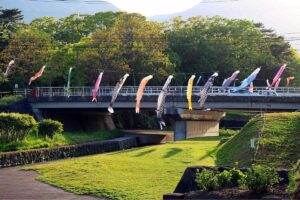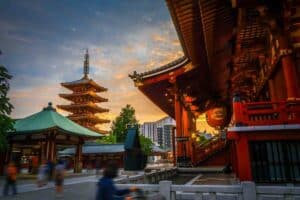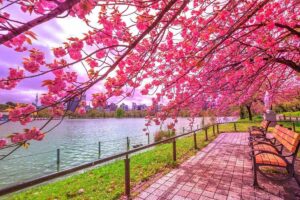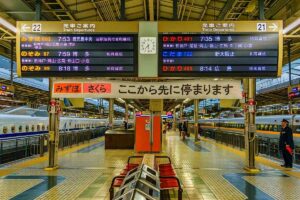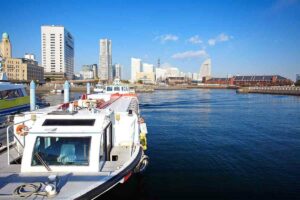If you haven’t seen the Tokyo Tower, you haven’t been to Tokyo.
This 333-meter communication and observation tower is a beloved landmark of the Japanese capital.
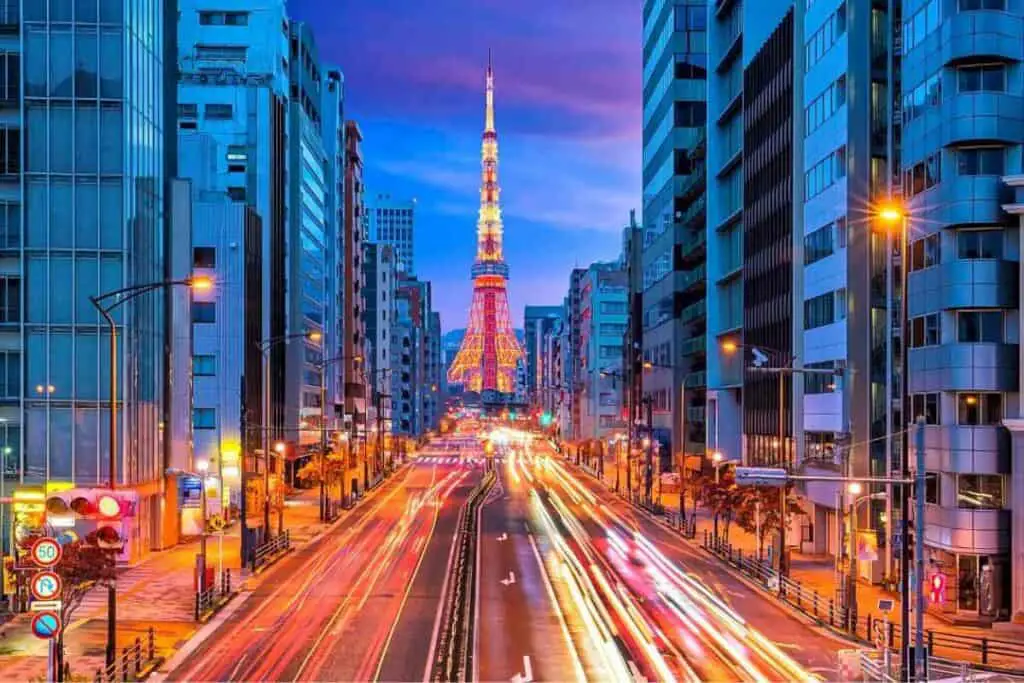
In this article, we share the amazing story of the Tokyo Tower, and why it is a must-visit attraction for any visitor to this city.
Table of Contents
The Tokyo Tower is a cultural icon
The Tokyo Tower stands out in the Tokyo skyline, and though it is no longer the tallest tower in Japan, it remains a recognizable and reassuring landmark in the city, by night and by day.
Popular tourist attraction
The Tokyo Tower is a tourist magnet due to the impressive panoramic views across Tokyo that it provides.
The tower is a member of the World Federation of Great Towers, alongside impressive landmarks like Toronto’s CN Tower, The Shard, and The Space Needle.
It is a priority visit for any traveler to Tokyo and tourism has overtaken its antenna leasing as a main source of income.
More than 3 million tourists head to the tower each year to take advantage of its observation decks.
It is believed that the Tokyo Tower has had more than 150 million visitors since it was built, making it one of the most-visited tourist attractions in Tokyo!
Read Next 📖
A broadcasting tower for the capital and beyond
The Tokyo Tower was built for regional television and radio broadcasting.
The national broadcaster NHK was the primary broadcaster, but over the years a variety of private TV stations and radio stations have installed antennas on the tower using analog and digital broadcasting technology.
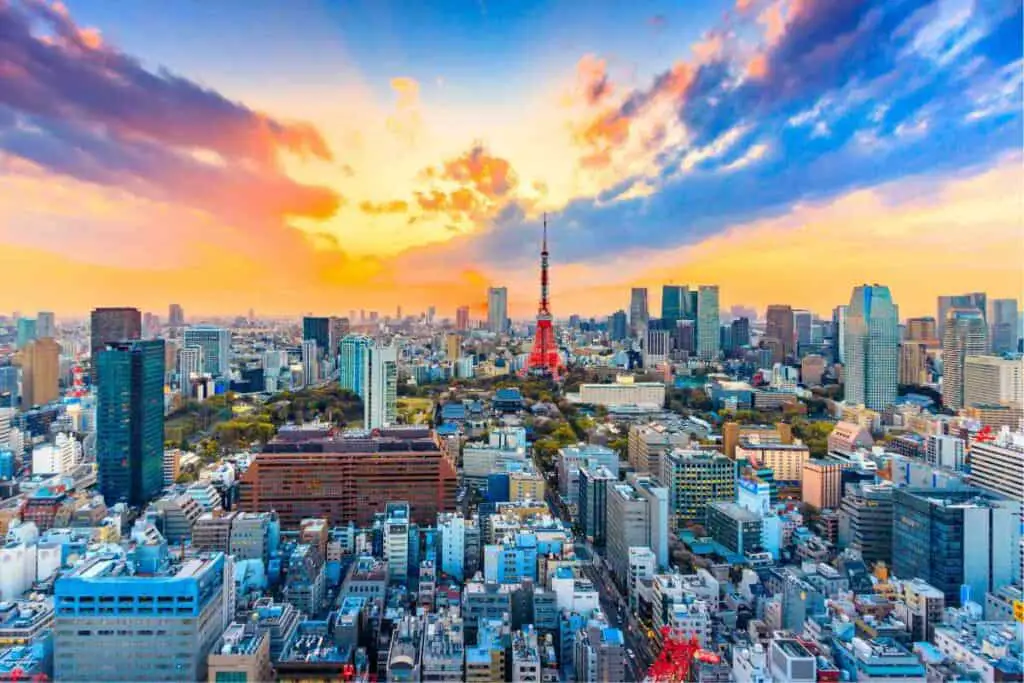
Analog and digital TV broadcasting from the tower ended in July 2011.
This was because the tower was no longer able to reliably broadcast a high-frequency, purely digital signal. Only two radio stations remain, Tokyo FM and InterFM.
Other uses
The Tokyo Tower is also used by Japan Rail to transmit an emergency stop signal if earthquakes occur and meteorological studies for the region.
It has also become a navigational point for flights into and out of Tokyo.
The amazing story behind the Tokyo Tower
In the 64 years the Tokyo Tower has been standing it has become an indispensable part of the Tokyo skyline.
Even its bright red and white colors, which are no longer required, have been preserved as they are so familiar to Tokyo residents and visitors.
Here’s the fascinating account of how the Tokyo Tower was built.
Design and inspiration behind the Tokyo Tower
The Japanese public broadcaster NHK started television broadcasting in the early 1950s and required a broadcasting tower that could provide signal coverage over the Kantō region. A single large tower was proposed to prevent the proliferation of multiple small towers across Tokyo.
The Tokyo Tower would become a telecommunications hub capable of supporting the technology and financial boom in postwar Japan. The tower was not only a piece of technical infrastructure but it was also built as a symbol of the renewed ascendancy of Japan.
The owner and operator of the Tokyo Tower was Hisakichi Maeda. He had great aspirations for the tower, intending it to exceed the Empire State Building in height.
However, the financial resources simply were not there to build such a large tower, so the height was limited to 1,093 feet (333 meters) which could achieve a transmission distance of 150 kilometers (93 miles) across the Kantō region.
A twin for the Eiffel Tower
The Tokyo Tower was designed by the famous Japanese architect and engineer Tachū Naitō. He took inspiration for its design from the iconic Eiffel Tower in Paris, France.
Another priority for the tower design was its ability to withstand earthquakes.
Naitō used his engineering expertise to ensure the tower could withstand earthquake and typhoon forces that exceeded the Great Kantō earthquake that had devastated Tokyo in the 1920s.
Construction of the Tokyo Tower
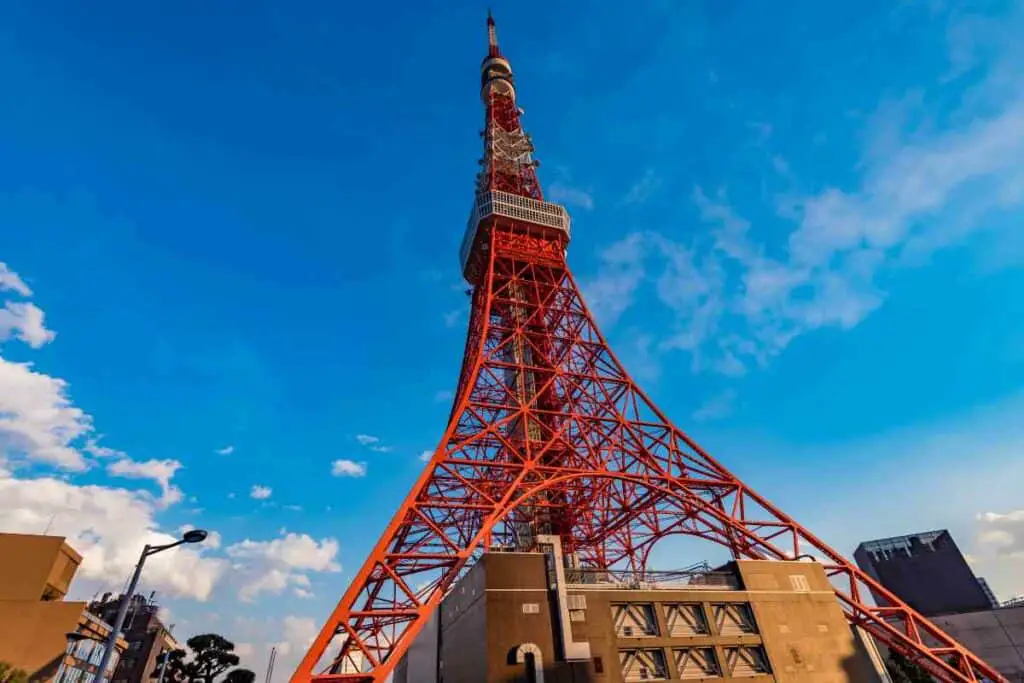
Construction commenced in June 1957. The main contractor for building the tower was Takenaka Corporation.
The construction company used hundreds of traditional construction workers called tobi who flocked to the site for work.
Crews of approximately 400 construction laborers worked daily on the tower. The tower was painted in bold red and white paint to comply with aviation law.
Repainting requires more than 28,000 liters of paint and is completed every five years.
The Tokyo Tower was built using steel that included scrap metal from US tanks that has been used in the Korean War. After just over a year and at a cost of over $8.4 million, the tower was completed.
When its 90-meter antenna was installed in December 1958, the Tokyo Tower became the world’s tallest freestanding tower, exceeding the Eiffel Tower by just nine meters!
Until the Tokyo Skytree was built in 2010, it was Japan’s tallest artificial structure.
Specifications of the Tokyo Tower
| Owner | The Tokyo Tower Company (Toei) |
| Architect | Tachū Naitō |
| Construction Company | Takenaka Corporation |
| Location | 4-chōme-2-8 Shibakōen, Minato City, Tokyo 105-0011, Japan |
| Date completed | December 1958 |
| Cost | $8.4 million |
| Total height | 1,093 feet (333 meters) |
| Weight | 4,000 tons |
| Height of the top floor (observatory) | 819 feet (249.6 meters) |
| Number of floors | 16 |
| Number of lifts and elevators | 4 |
Digitization of the Tokyo Tower
In 2003 the Tokyo Tower was retrofitted with ground-wave digital broadcasting equipment.
This included the installation of a ground-wave digital antenna and a new transmitter room, which was fitted above the tower’s special observatory.
Is the Tokyo Tower earthquake-proof?
Yes. The Tokyo Tower was reinforced when it underwent digitization back in 2003.
At the time the new antenna and transmitting equipment increased the weight of the tower by more than 10%. The increase in dead weight had significant implications for the safety of the tower during an earthquake, as it would have the effect of amplifying any seismic shift that occurred.
To control the heightened risk, Japanese engineers developed and installed a series of vibration control dampers, capable of controlling an adverse seismic response. The dampers reduce the stresses and shear force responses in the tower by more than 30%.
The Tokyo Tower was able to withstand the 2011 Tōhoku earthquake, though its 90-meter antenna did become slightly bent.
Must-see features of the Tokyo Tower
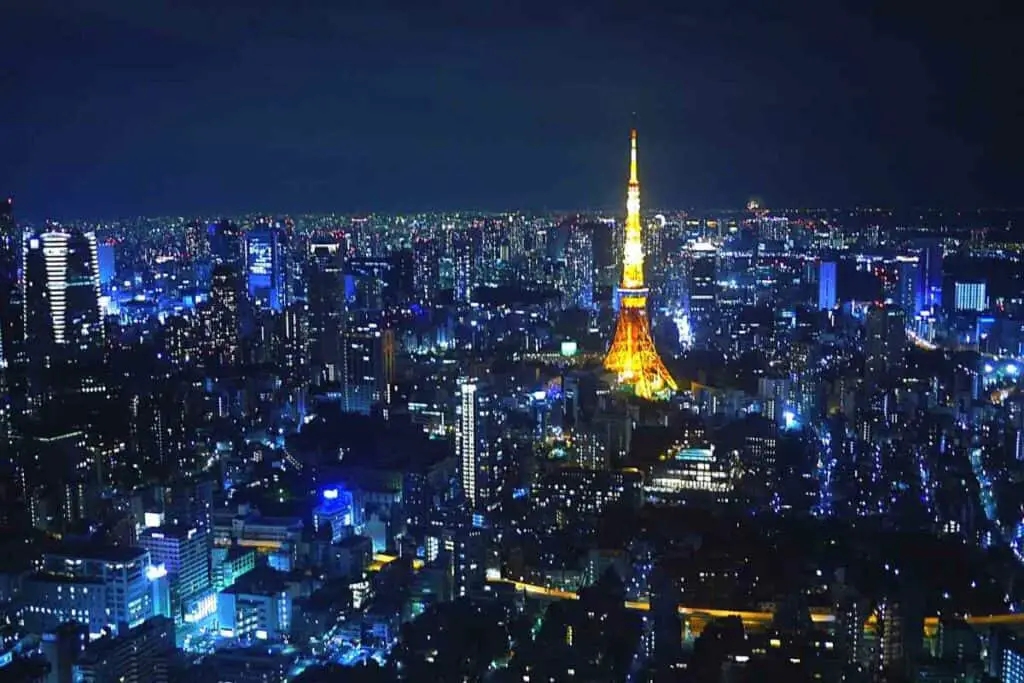
Here’s why people love to visit the Tokyo Tower.
1. Observation decks
Understandably, the observation decks are the main attraction of the Tokyo Tower.
Most visitors head to the two-story Main Observatory, which is at a height of 410 ft (125 meters) above ground.
The panoramas from the second floor are impressive, even offering glimpses of Mount Fuji!
You may also like 📖
There is a second observation deck called the Special Observatory. It sits beneath the tower antenna at a height of more than 733 feet (223.5 meters).
Both observation decks are accessed via 4 elevators located in FootTown, the four-story building beneath the tower. To get to the Special Observatory, visitors can take a second elevator from the upper floor of the Main Observatory.
If you’re fit, you can always use the outside stairwell of the tower. It has 660 steps and takes you straight to the Main Observatory.
2. FootTown
FootTown is the building at the base of the Tokyo Tower. It has amenities like toilets and baby changing, souvenir stores, and provides elevator access to the Main Observation Deck.
After seeing the amazing views, you can head there to enjoy an ice cream or a coffee at the Mother Farm Cafe. There is also an exhibition space, with exhibits relating to the history of the tower.
3. Illuminations
Tokyo Tower has impressive illuminations that light up the city between sunset and midnight daily. The colors of the lights change with the seasons and special events.
For example, in the winter, the illuminations help everyone feel warmer by lighting the tower in a warm orange tone, whereas during the summer a cool white is used so people won’t feel so hot!
Visiting the Tokyo Tower
A visit to the Tokyo Tower is great by day or by night.
Because many tourists now flock to the Tokyo Skytree, you won’t experience massive queues and you can plan your visit for any time of day.
How to get to the Tokyo Tower
The Tokyo Tower is located in the Shiba-koen district of Minato City, Tokyo. Once you’re in the area, it’s impossible to miss.
Access is straightforward via the following routes:
- The Mita subway line to Onarimon Station and walk for five minutes
- The Hibiya subway line to Kamiyacho Station and walk for five minutes
- The Oedo subway line to Akabanebashi Station and walk for five minutes
- The JR Yamanote line to Hamamatsucho Station and walk for fifteen minutes
Tokyo Tower opening hours and entrance fee
You can visit the Tokyo Tower every day between 9 am and 11 pm.
The entrance fee for the Main Observation deck is a great value at just 900 yen ($6.50) while admission to the Special Observation deck is 3,000 yen ($22).
Rounding up
The Tokyo Skytree might be getting all the attention, but the Tokyo Tower will always be a legendary Tokyo landmark. Make a point of visiting the tower as part of your visit to Tokyo, and take in amazing views of the city.
- Best Golden Week Destinations In Japan (Top 10 Locations)
- A Traveler’s Guide to Honshu (Japan’s largest Island)
- Best Hanami Destinations In Japan (Top 10 Locations)
- Eki Stamp Book (Gotta Collect Them All!)
- Best Snow Monkey Destinations In Japan (My Top 6 Picks)
- Best Marinas in Japan (10 Finest Waterfront Marinas)

